Bunk Beds for Kids: A Complete Guide
Bunk beds are one of the most popular types of furniture for kids’ bedrooms. They are not only functional, but also fun and stylish. They can help you save space, create a cozy and playful environment, and foster bonding among your children. However, choosing and using bunk beds for kids can also pose some challenges. You need to consider various factors such as safety, durability, comfort, style, size, and budget. You also need to decorate and organize the bunk beds in a way that suits your kids’ preferences and needs.
By the end of this article, you will have a better understanding of what bunk beds are, how to choose them, how to use them, and how to make them more enjoyable for your kids. Let’s get started!
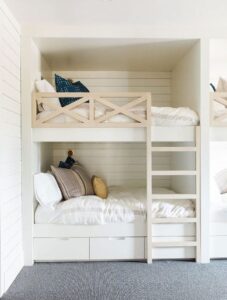
Types of Bunk Beds for Kids
Bunk beds are basically two or more beds stacked on top of each other. They usually have a ladder or stairs to access the upper bed(s). There are many types of bunk beds for kids available in the market. Here are some of the most common ones:
- Standard bunk beds: These are the simplest and most classic type of bunk beds. They consist of two twin-sized beds placed one above the other. They are ideal for small rooms or shared bedrooms.
- Lofted bunk beds: These are similar to standard bunk beds, except that they only have one bed on top. The bottom space can be used for various purposes such as a desk, a sofa, a dresser, or a play area. They are ideal for rooms with limited floor space or high ceilings.
- Triple bunk beds: These are like standard bunk beds, except that they have three beds instead of two. They can be arranged in different ways such as a straight line, an L-shape, or a T-shape. They are ideal for large families or frequent guests.
- Futon bunk beds: These are like lofted bunk beds, except that the bottom space has a futon instead of a desk or a sofa. The futon can be folded into a couch during the day and unfolded into a bed at night. They are ideal for rooms that need extra sleeping space or seating space.
- L-shaped bunk beds: These are like standard bunk beds, except that they are arranged in an L-shape instead of a straight line. The lower bed is perpendicular to the upper bed, creating a corner space that can be used as a nightstand or a shelf. They are ideal for rooms with odd-shaped walls or corners.
- Bunk beds with storage: These are like standard bunk beds, except that they have built-in drawers, shelves, or cabinets under or beside the beds. They can help you store your kids’ clothes, toys, books, or other items. They are ideal for rooms with limited storage space or clutter issues.
- Bunk beds with stairs: These are like standard bunk beds, except that they have stairs instead of a ladder to access the upper bed. The stairs can also have storage compartments or drawers under them. They can provide more safety and comfort for your kids, especially if they are young or afraid of heights. They are ideal for rooms with enough space for the stairs.
- Bunk beds with desk: These are like lofted bunk beds, except that the bottom space has a desk instead of a sofa or a dresser. The desk can be used for studying, working, or gaming. They can help you save space and create a productive environment for your kids. They are ideal for rooms that need a workstation or a homework area.
These are just some of the types of bunk beds for kids that you can find in the market. You can also customize your own bunk beds according to your preferences and needs. For example, you can mix and match different sizes, colors, materials, or designs of the beds. You can also add accessories such as curtains, lights, canopy, or tent to make the bunk beds more fun and cozy.
Features to Consider When Buying Bunk Beds for Kids
When you are shopping for bunk beds for kids, you need to consider several features that can affect the quality, safety, comfort, and style of the bunk beds. Here are some of the most important ones:
- Safety: This is the most crucial feature to consider when buying bunk beds for kids. You want to make sure that the bunk beds are sturdy, stable, and secure. You also want to make sure that they have safety rails on all sides of the upper bed(s) to prevent your kids from falling off. You also want to make sure that the ladder or stairs are easy to climb and have non-slip steps and handrails. You also want to make sure that the bunk beds meet the safety standards and regulations of your country or region.
- Durability: This is another important feature to consider when buying bunk beds for kids. You want to make sure that the bunk beds are made of durable materials such as wood, metal, or plastic. You also want to make sure that they have a strong frame and joints that can withstand the weight and movement of your kids. You also want to make sure that they have a good finish and coating that can resist scratches, stains, or corrosion.
- Comfort: This is another essential feature to consider when buying bunk beds for kids. You want to make sure that the bunk beds are comfortable for your kids to sleep and relax on. You also want to make sure that they have enough space and height for your kids to sit up, stretch out, or turn around. You also want to make sure that they have a good mattress, bedding, and pillow that can support your kids’ body and posture.
- Style: This is another significant feature to consider when buying bunk beds for kids. You want to make sure that the bunk beds match your kids’ personality and taste. You also want to make sure that they fit the theme and color scheme of your kids’ bedroom. You also want to make sure that they have a unique and attractive design that can enhance the look and feel of your kids’ bedroom.
- Size: This is another vital feature to consider when buying bunk beds for kids. You want to make sure that the bunk beds fit the size and shape of your kids’ bedroom. You also want to make sure that they leave enough space for other furniture and activities in your kids’ bedroom. You also want to make sure that they suit the size and age of your kids.
- Budget: This is another key feature to consider when buying bunk beds for kids. You want to make sure that the bunk beds fit your budget and offer good value for money. You also want to compare different prices and deals from different sellers and brands. You also want to check the warranty and return policy of the bunk beds before buying them.
These are some of the features that you need to consider when buying bunk beds for kids. Of course, you may have other preferences or requirements depending on your situation and needs. The main point is to do some research and planning before making a decision.
Also Read: Living Room Furniture for Small Spaces: How to Make Your Home Look Bigger and Better
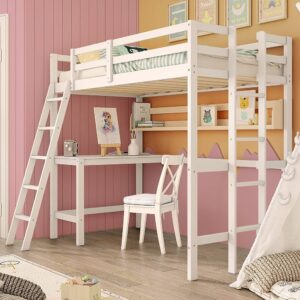
Tips for Decorating and Organizing Bunk Beds for Kids
Once you have bought the right bunk beds for kids, you need to decorate and organize them in a way that makes them more appealing and functional for your kids. Here are some tips that can help you do that:
- Choose a theme or color scheme. You can base the theme or color scheme on your children’s favorite characters, hobbies, animals, or places. For example, you can choose a pirate theme, a princess theme, a sports theme, or a jungle theme. Alternatively, you can choose a simple color scheme that matches the rest of the room or creates contrast. For example, you can choose blue and white, pink and purple, green and yellow, or black and red.
- Add bedding and pillows that match the theme or color scheme. You can use sheets, blankets, quilts, comforters, or duvets that have patterns, prints, or designs that match the theme or color scheme. You can also add pillows of different shapes, sizes, colors, and textures that complement the bedding. For example, you can use star-shaped pillows, animal-shaped pillows, fluffy pillows, or sequined pillows.
- Use curtains, lights, or canopy to create privacy and coziness. You can use curtains to separate the bunk beds for kids from each other or from the rest of the room. You can choose curtains that match the theme or color scheme or have fun patterns or prints. You can also use lights to add some brightness and warmth to the bunk beds for kids. You can use string lights, fairy lights, lanterns, or lamps that have different colors or effects. You can also use a canopy to create a more romantic and dreamy atmosphere. You can choose a canopy that matches the theme or color scheme or has frills or lace.
- Use baskets, bins, or shelves to store toys, books, or clothes. You can use baskets, bins, or shelves to organize the items that your children need or want to keep near their bunk beds for kids. You can choose baskets, bins, or shelves that match the theme or color scheme or have cute labels or stickers. You can also use hooks, pegs, or racks to hang clothes, bags, hats, or accessories.
- Use wall decals, posters, or photos to personalize the space. You can use wall decals to decorate the walls around the bunk beds for kids with images or words that match the theme or color scheme. You can also use posters to display your children’s favorite movies, cartoons, bands, or celebrities. You can also use photos to showcase your children’s memories with their family or friends.
Pros and Cons of Bunk Beds for Kids
Another aspect of bunk beds for kids that you need to consider is their advantages and disadvantages. Bunk beds for kids have many benefits that make them appealing to many parents and children. However, bunk beds for kids also have some drawbacks that may pose some challenges or risks. Here are some pros and cons of bunk beds for kids:
Pros:
- Save space: Bunk beds for kids are ideal for small rooms or large families who need to accommodate more than one child in a room. They free up floor space that can be used for other purposes such as playing, studying, or relaxing.
- Create fun: Bunk beds for kids are fun and exciting for many children who enjoy climbing up and down the ladder, sleeping on different levels, or pretending to be in a fort, a castle, or a spaceship. These beds also encourage creativity, imagination, and adventure among children who can decorate and personalize their own spaces.
- Foster bonding: Bunk beds for kids foster bonding among siblings who share a room or among friends who have sleepovers. They promote communication, cooperation, and companionship among children who can talk, play, or read together before bedtime. Bunk beds for kids also teach children how to respect each other’s privacy, preferences, and belongings.
- Offer versatility: Bunk beds for kids offer versatility in terms of design, function, and configuration. They come in various styles such as traditional, modern, or rustic. Bunk beds for kids also have different features such as drawers, desks, or trundles that add more storage or sleeping space. Bunk beds for kids can also be configured in different ways such as parallel, perpendicular, or L-shaped to suit different room layouts or preferences.
Cons:
- Pose safety risks: Bunk beds for kids pose safety risks for children who may fall from the upper bunk, get trapped between the rails or the mattress, or hit their head on the ceiling or the lower bunk. Bunk beds for kids also pose safety risks for parents who may have difficulty reaching or checking on their children on the upper bunk. They require safety measures such as guardrails, ladders, or mattresses that meet the standards and regulations of the Consumer Product Safety Commission (CPSC). Bunk beds for kids also require supervision and guidance from parents who need to teach their children how to use them safely and responsibly.
- Limit accessibility: Bunk beds for kids limit accessibility for children who may have trouble climbing up or down the ladder, especially at night or when they are sick or tired. They also limit accessibility for parents who may have trouble making the bed, changing the sheets, or tucking in their children on the upper bunk. Bunk beds require accessibility solutions such as night lights, step stools, or handrails that make it easier and safer for children and parents to access the upper bunk.
- Require maintenance: Bunk beds for kids require maintenance to keep them clean, comfortable, and durable. They require regular cleaning to remove dust, dirt, or stains from the bedding, the frame, or the ladder. Bunk beds for kids also require regular inspection to check for any loose screws, cracks, or damages that may compromise their stability or quality. They also require occasional replacement of parts or accessories that may wear out or break over time.
These are some of the pros and cons of bunk beds for kids that you need to consider before buying them. Of course, you may have different experiences or opinions depending on your situation and needs. The main point is to weigh the benefits and drawbacks of bunk beds for kids and decide whether they are worth it or not.
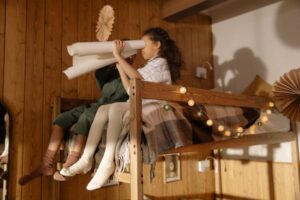
Frequently Asked Questions About Bunk Beds for Kids
Bunk beds for kids can raise many questions in your mind that you may want to know the answers to before buying them. Here are some of the frequently asked questions about bunk beds for kids and their answers:
- What is the minimum age for using bunk beds?
There is no definitive answer to this question, as different bunk beds may have different age recommendations or restrictions. However, a general rule of thumb is that children under the age of six should not use the upper bed of a bunk bed, as they may not have the physical or mental maturity to climb up and down safely and responsibly. Children under the age of three should not use any bed of a bunk bed, as they may not have the motor skills or awareness to prevent themselves from falling off or getting trapped. Therefore, it is advisable to check the age suitability of the bunk beds before buying them and follow the manufacturer’s instructions and guidelines.
- What is the maximum weight limit for bunk beds?
Again, there is no definitive answer to this question, as different bunk beds may have different weight capacities or limitations. However, a general rule of thumb is that the upper bed of a bunk bed should not exceed 150 pounds (68 kg), while the lower bed of a bunk bed should not exceed 200 pounds (91 kg). These numbers may vary depending on the type, size, material, and quality of the bunk beds. Therefore, it is advisable to check the weight limit of the bunk beds before buying them and follow the manufacturer’s specifications and recommendations.
- How to assemble and disassemble bunk beds?
The process of assembling and disassembling bunk beds may differ depending on the model, design, and complexity of the bunk beds. However, a general rule of thumb is that you will need some basic tools such as a screwdriver, a hammer, a wrench, a drill, and a level. You will also need some patience, time, and help from another person.
Follow the instructions manual that comes with the bunk beds and make sure that all the parts are properly aligned, secured, and tightened. You will also need to check that all the safety features are in place and working. To disassemble the bunk beds, you will need to reverse the steps of assembling them and store or dispose of the parts safely and responsibly.
- How to clean and care for bunk beds?
The method of cleaning and caring for bunk beds may vary depending on the material, finish, and condition of the bunk beds. However, a general rule of thumb is that you will need some basic supplies such as a cloth, a vacuum cleaner, a mild detergent, a soft brush, and a polish. You will also need some regularity, frequency, and attention. You will need to dust off the surface of the bunk beds with a cloth or a vacuum cleaner every week or so to remove any dirt or dust.
Moreover, You will also need to wipe down the surface of the bunk beds with a damp cloth or a mild detergent every month or so to remove any stains or spills. You will also need to brush off any loose threads or fibers from the bedding or pillows every week or so to prevent any damage or wear. You will also need to polish the surface of the bunk beds with a polish every year or so to restore any shine or luster. Furthermore, You will also need to check for any cracks, chips, loose screws, broken slats, or worn out parts every month or so and repair or replace them as soon as possible.
Conclusion
Bunk beds for kids are a great option for your childrens’ bedroom if you want to save space, create fun, foster bonding, and offer versatility in your kids’ bedroom. However, you also need to consider the safety, durability, comfort, style, size, and budget of the beds for kids before buying them. You also need to decorate and organize the bunk beds for kids in a way that makes them more appealing and functional for your kids. You also need to know the answers to some of the frequently asked questions about bunk beds for kids before using them.
We hope that this article has provided you with a complete guide on bunk beds for kids and helped you make an informed decision. If you are looking for some high-quality and affordable bunk beds for kids, we recommend you to check out the following websites: Thespruce.com, nymag.com, and mumsnet.com
Do you have any feedback or opinions on this article or on bunk beds for kids? Please feel free to share them with us in the comments section below. We would love to hear from you and learn from your experiences. Thank you for reading and happy shopping!

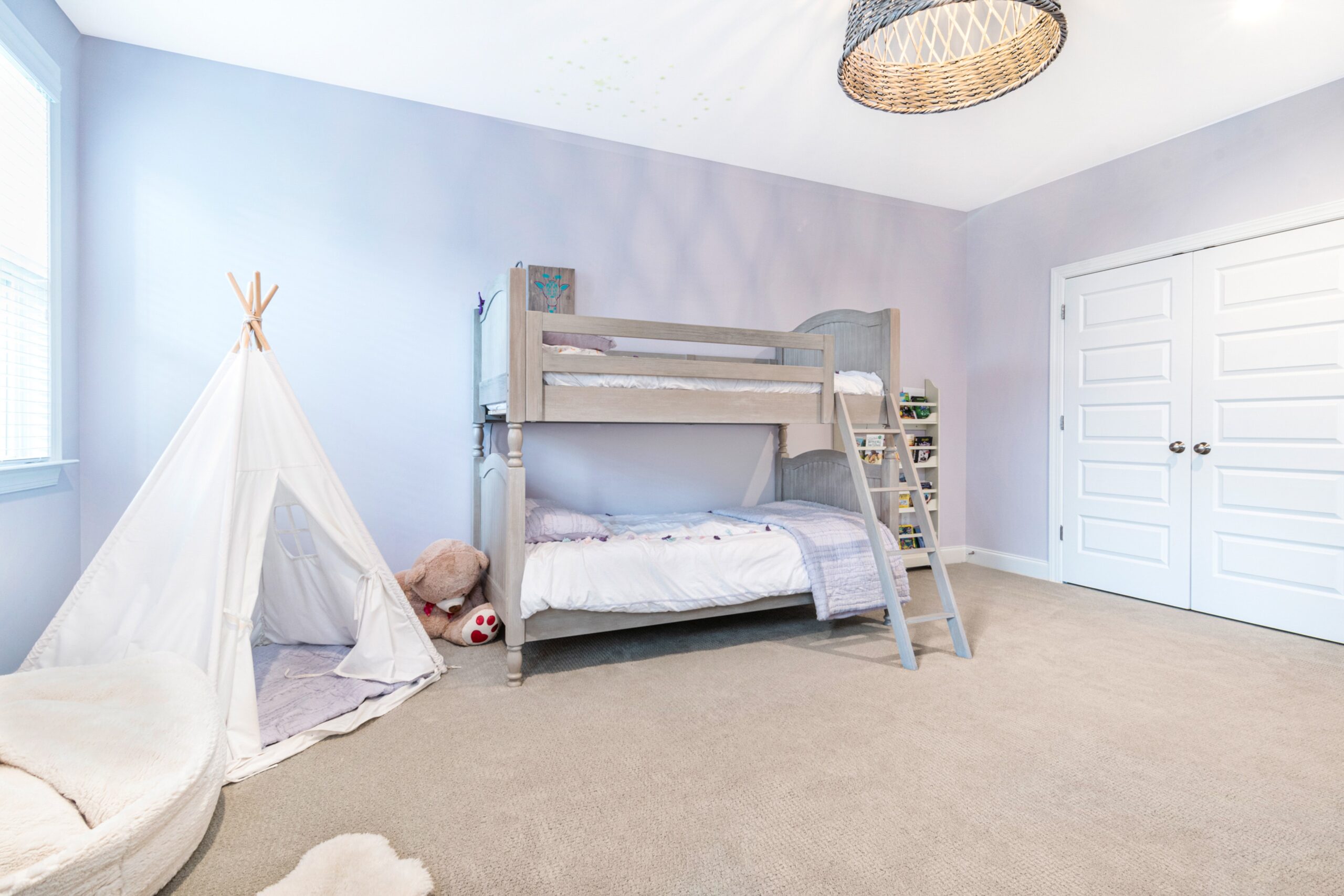
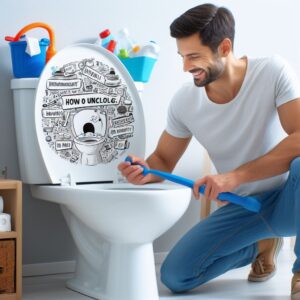



2 thoughts on “Bunk Beds for Kids: A Complete Guide”